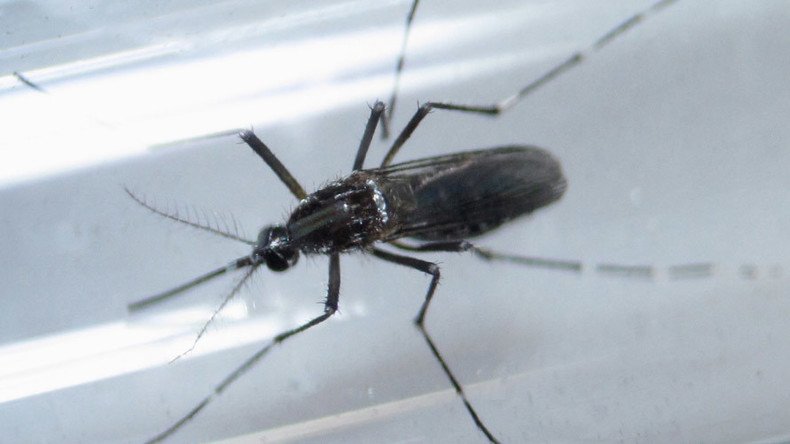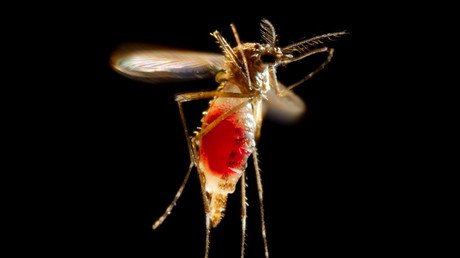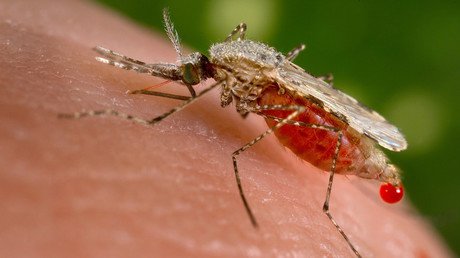‘Turning point in Zika outbreak’: CDC confirms virus causes microcephaly

After months of studying the Zika virus, the US health watchdog concluded that mounting evidence has proven that the decease causes microcephaly in newborns. Meanwhile a separate study by Brazilian doctors found “severe” birth defects associated with Zika.
The Zika virus drew international attention after the World Health Organization (WHO) reported its rapid spread across the Americas last year. The virus is carried by the same mosquitoes which also spread dengue and yellow fevers, along with some other diseases.
We’re no longer questioning whether #Zika causes microcephaly – but rather the spectrum of disorders this devastating virus may cause.
— Dr. Tom Frieden (@DrFriedenCDC) April 13, 2016
The virus, which is now considered a global public health emergency by the WHO, can also be transmitted through sexual interaction.
The symptoms of the Zika are relatively mild but the disease is believed to be highly risky for pregnant women, as it may cause microcephaly, a rare condition that causes babies to be born with small heads and damages the brain.
CDC concludes Zika a cause of microcephaly & possibly other birth defects. https://t.co/wjhQCIPncT
— CDC (@CDCgov) April 13, 2016
After months of scientific study, the Centers for Disease Control and Prevention (CDC) said that there is now enough evidence to clearly establish that the Zika virus causes microcephaly in the newborn offspring of infected mothers.
To determine the cause and effect link between adverse pregnancy and birth outcomes, the team of scientists evaluated available scientific data.
“On the basis of this review, we conclude that a causal relationship exists between prenatal Zika virus infection and microcephaly and other serious brain anomalies,” the report published by the New England Journal of Medicine said.
Among the evidence that clinched the case for the CDC was that virus has been found in the spinal fluid, the brain tissue, and amniotic fluid of microcephaly babies.
“This study marks a turning point in the Zika outbreak,” CDC director Tom Frieden said in a statement. “It is now clear that the virus causes microcephaly.”
Important #Zika development @NEJM. Never in humans have we seen illness spread by mosquitoes linked to birth defect. https://t.co/AM92nXjuGe
— Dr. Tom Frieden (@DrFriedenCDC) April 13, 2016
Yet at the same time, the CDC stressed that the new report notes that “no single piece of evidence provides conclusive proof that Zika virus infection is a cause of microcephaly and other fetal brain defects.”
Instead, the US watchdog said that the conclusions were based on “increasing evidence” from studies that when examined using “established scientific criteria” support the authors’ conclusions.
We still need more answers, which could take years—but we now know enough to say that #Zika is a cause of severe brain defects.
— Dr. Tom Frieden (@DrFriedenCDC) April 13, 2016
“The finding that Zika virus infection can cause microcephaly and other severe fetal brain defects means that a woman who is infected with Zika during pregnancy has an increased risk of having a baby with these health problems. It does not mean, however, that all women who have Zika virus infection during pregnancy will have babies with problems. As has been seen during the current Zika outbreak, some infected women have delivered babies that appear to be healthy,” CDC stressed in their press release.
The timing of the CDC’s conclusions may exert additional pressure on Congress to allocate nearly $2 billion in emergency funding that President Obama requested to contain the outbreak.
In the meantime, a clinical study by the Brazilian scientists published in the British Medical Journal on Wednesday, found “severe” birth defects associated with Zika in kids born in the Brazilian state of Pernambuco between July and December 2015.
Led by Professor Maria de Fatima Vasco Aragao, the medical team at the center of the Brazilian epidemic focused on analyzing computed tomography (CT) and resonance imaging (MRI) scans in some 23 new born kids from Zika-infected mothers.
“The brain damage caused by Zika virus infection in these children was extremely severe, indicating a poor prognosis for neurological function. This scenario might be the worse one in the disease severity spectrum,” the scientists said in their report.
After reviewing the CT scans in 22 kids, the doctors determined that “all had calcifications in the junction between cortical and subcortical white matter.”
Some 21 new-born had malformations of cortical development, while 20 of them showed decreased brain volume. Nineteen babies had ventriculomegaly, and half of those examined had hypoplasia of the cerebellum or brainstem.
The eight MRI scans also proved that all had “calcifications in the junction between cortical and subcortical white matter, malformations of cortical development occurring predominantly in the frontal lobes, and ventriculomegaly.”
Seven scans showed enlarged cisterna magna, and delayed myelination, while six of the MRI scans pointed to severe decrease in brain volume, simplified gyral pattern, and abnormalities of the corpus callosum.
On Tuesday, Brazil’s health ministry said the total number of confirmed and suspected cases of microcephaly in the country was 4,949. The officials have also announced that they will temporarily let lose genetically modified mosquitoes developed by a British firm to battle the infected mosquito population.
Oxford-based Oxitec welcomed the a special temporary registration (RET, Registro Especial Temporário) and will soon let lose their GM creations into the wild. Its genetically engineered male mosquito, OX513A, known as Friendly Aedes aegypti is designed to pass on faulty genes to Zika-infected females, so that their offspring won’t be able to reproduce, halting the spread of the disease.














